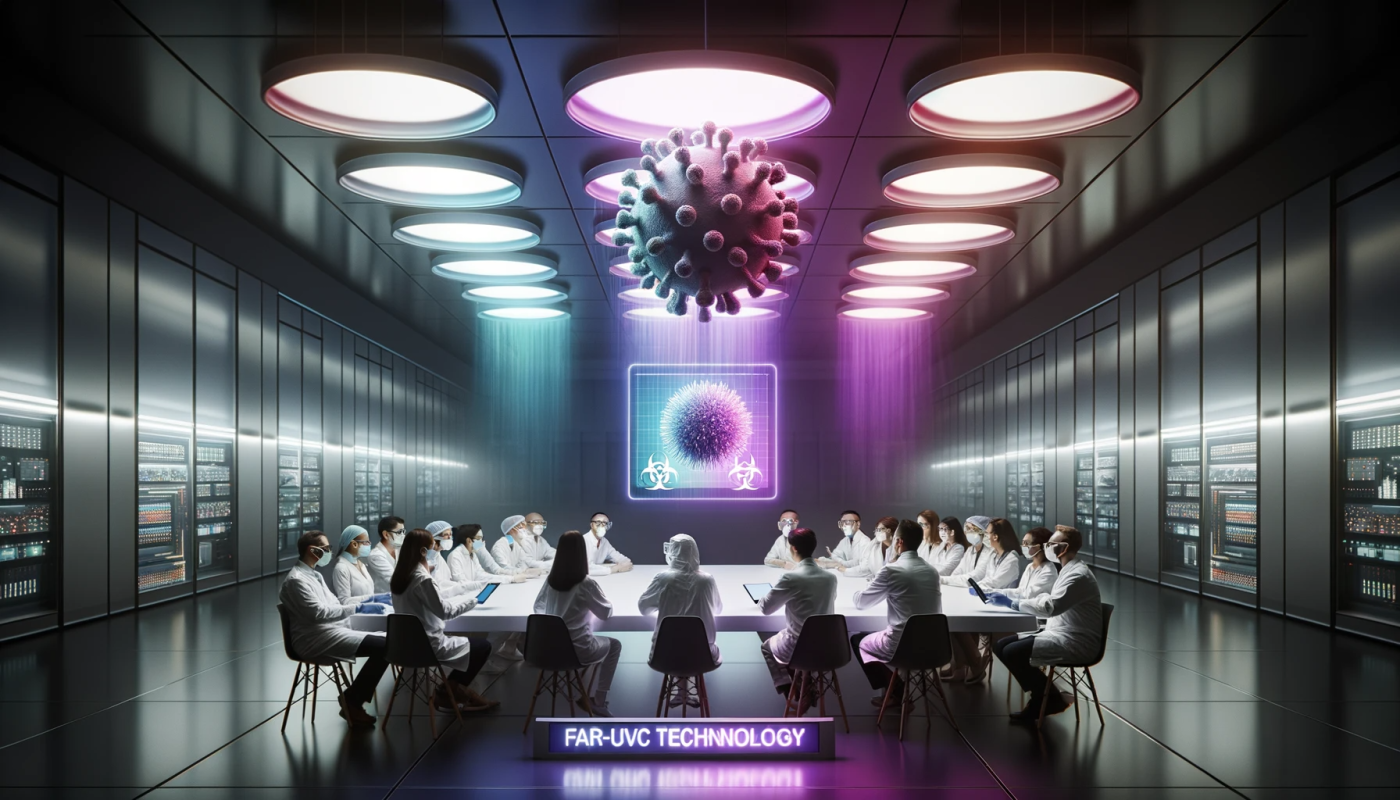Far-UVC Light, News
Unlocking the Power of Far-UVC Technology in Mitigating Airborne Pathogens
September 11, 2023
In an era where infectious diseases have robustly tested the grit of global healthcare infrastructures, the development and exploration of efficient antimicrobial technologies are paramount. A recent study led by P. Jacob Bueno de Mesquita et al. unveils enlightening prospects in employing far-UVC light as a proficient tool in mitigating airborne pathogens, forging a path toward enhanced indoor air quality and microbial safety.
UVC: A Veteran Warrior Against Pathogens
UVC technology, particularly with a wavelength of 254 nm, has long been acclaimed for its antimicrobial properties and has been a staple in curbing airborne pathogen transmission across varied establishments, from hospitals to schools and shelters. This century-old technology, backed by recommendations from renowned entities like the CDC, has proven its worth in reducing the spread of infectious agents in controlled environments.
The innovation of LED Germicidal Ultraviolet (GUV) technology, ranging from 265-70 nm, promises to supersede traditional mercury 254 nm sources, heralding a new epoch in microbial control. Nonetheless, the incumbent GUV must be maneuvered cautiously – situated overhead to circumvent direct overexposure and ensuing health complications like keratoconjunctivitis and erythema.
The Dawn of Far-UVC Technology
Enters far-UVC technology – with an even shorter wavelength of 222 nm. It not only possesses heightened biological activity but also ensures that its potent rays are absorbed in the superficial layers of the eye or skin, obviating even short-term adverse impacts. This paradigm-shifting technology empowers the direct deployment of UVC into spaces even when occupied, thus optimizing air disinfection where it’s most pertinent: where we breathe, converse, and cough.
Notably, in the laboratory settings, 222 nm UVC has demonstrated a stellar performance as an effective germicide, matching the efficacy of 254 nm GUV against formidable pathogens like M. tuberculosis, SARS-CoV-2, and influenza. While a single upper-room GUV fixture could deliver 18-110 equivalent air changes per hour (eACH) dependent on the microbial susceptibility and relative humidity, a single far-UVC fixture could deliver a commendable 33-66 eACH.
Distinguishing Far-UVC’s Dual Mechanism
Far-UVC distinguishes itself by inactivating viral aerosols through a dual mechanism that ravages protein and nucleic acid structures. This suggests a potential for improved disinfection effectiveness over both 254 and 265-270 nm systems, resonating a promising capability against a broader spectrum of pathogens. The feasibility of applying far-UVC across diverse indoor settings, including in proximity to breathing zones, heralds its applicability in public transportation and various settings, thereby amplifying protection against infectious transmission from nearby occupants.
A Future Fortified with Far-UVC
With these intriguing insights, far-UVC technology unfurls a plethora of possibilities in significantly enhancing our defensive mechanisms against airborne infectious agents, especially in indoor environments where the probability of transmission escalates. The capability of far-UVC to be deployed even in occupied areas stands out as a monumental stride toward more efficient, consistent, and safe air disinfection practices.
Harnessing the power of far-UVC in a myriad of settings, especially those that host substantial crowds, could potentially dwarf the impact of infectious outbreaks, shielding communities and economies from the crippling effects of widespread diseases.
Let’s embark on a journey where technological innovations, such as far-UVC, guide us toward a future where the air we breathe is not just a silent carrier of pathogens but a safe, life-sustaining medium, escorted by advanced science and mindful applications.
For a deep dive into the technical aspects and findings of the study,Far-UVC_ Technology Update with an Untapped Potential to Mitigate Airborne Infections

